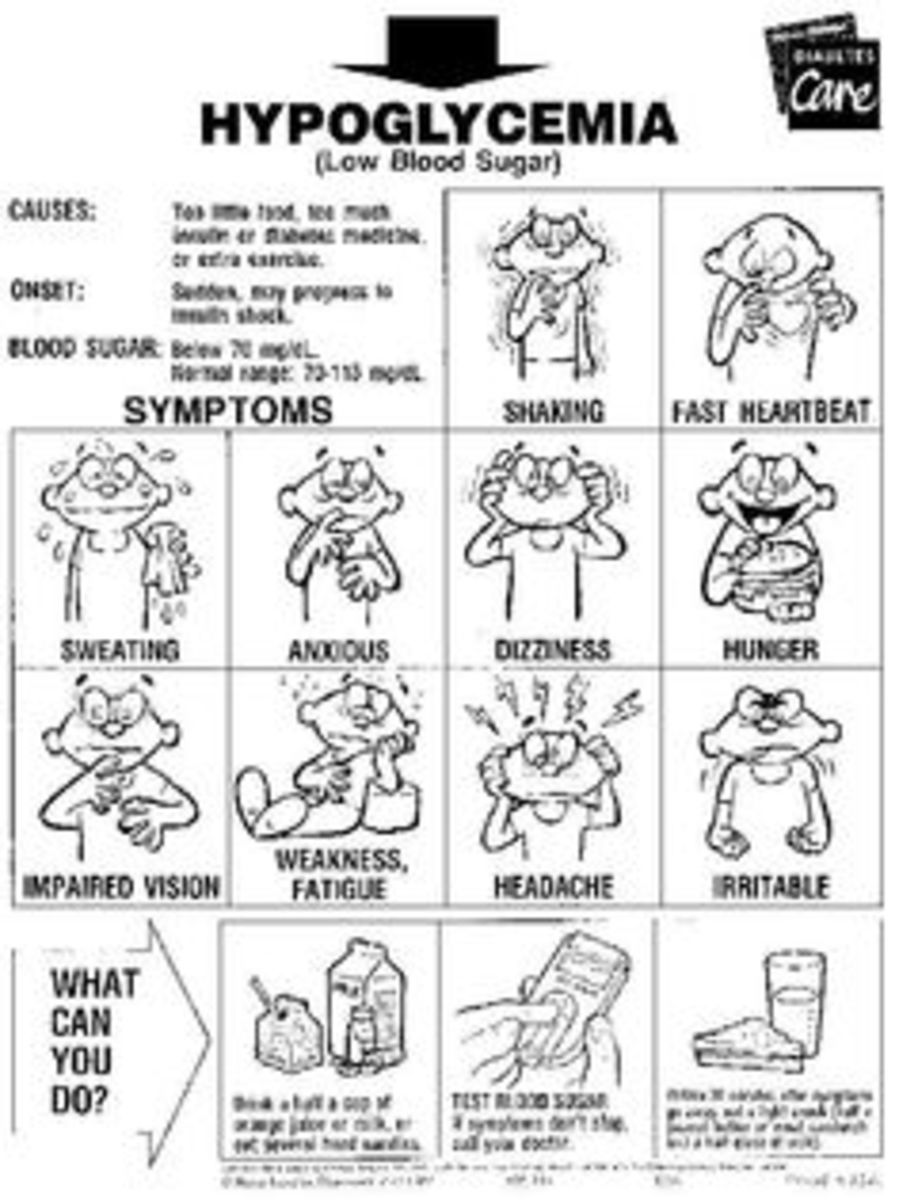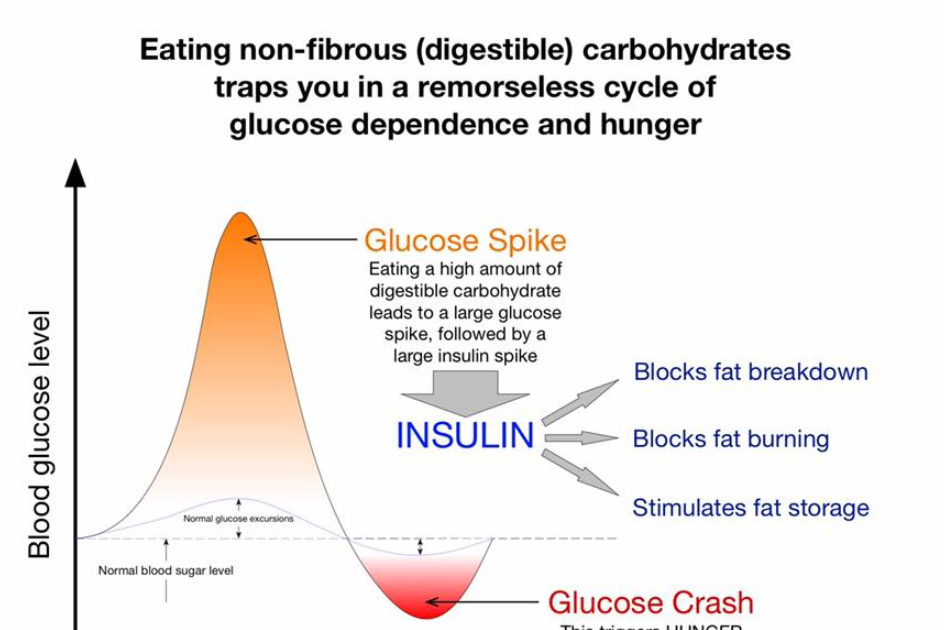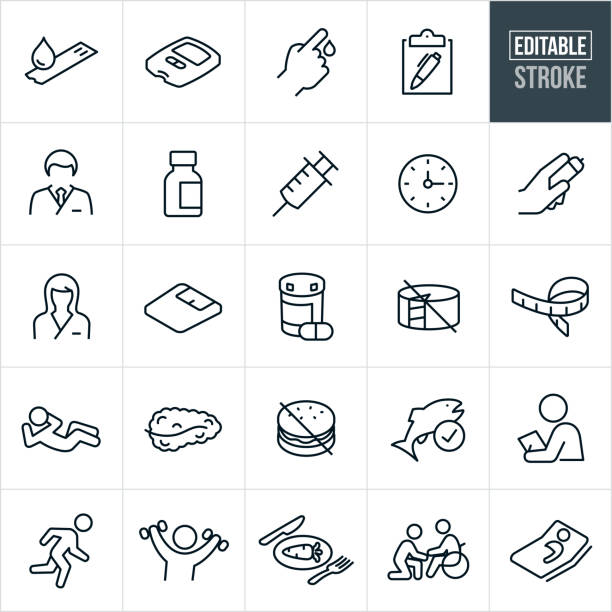Get A Free 7 Day Diabetes Meal Plan
Get a free 7-Day Diabetes Meal Plan from Constance Brown-Riggs who is a Registered Dietitian-Certified Diabetes Educator and who is also a national spokesperson for the American Dietetic Association.
Just enter in your email below to download your free Diabetes Meal Plan.
Your Diabetes Devices And Hypoglycemia
Several insulin pumps are now available that make managing blood sugar levels easier, particularly when connected to a glucose meter or a CGM.
Some of the most important advantages of CGM devices are the improved insulin control and the ability to detect trends and lows early. With improved technology, it is now possible for parents to track blood sugar trends in their kids even when they are hundreds of miles apart .
In addition, automated insulin delivery systems, also known an artificial pancreas or a hybrid closed-loop system, will automatically adjust insulin to match your bodys need to help you spend more time in your target range.
Resources that provide people with T1D and their families with more detailed information about pumps and CGM devices are available through JDRF here. For people looking for a deeper understanding of technology that helps people with T1D better manage their blood sugar, JDRF resources are available here.
Hypoglycemia In Children: Pediatric Ketotic Hypoglycemia
Some children experience pediatric ketotic hypoglycemia, a condition involving low blood sugar levels and high levels of ketones. If people do not have enough glucose to use as energy, the body begins to break down fat in the body instead. The body produces chemicals called ketones as a by-product of breaking down fat.
According to a 2019 study , pediatric ketotic hypoglycemia usually occurs due to poor intake of food, a gastrointestinal illness and vomiting, or a period of prolonged fasting. Severe metabolic and hormonal conditions may also cause pediatric ketotic hypoglycemia.
Pediatric ketotic hypoglycemia may affect children from 6 months old and often resolves after the age of 6 years.
Read Also: Most Common Side Effect Of Metformin
When You Have Low Blood Sugar
First, eat or drink 15 grams of a fast-acting carbohydrate, such as:
- Three to four glucose tablets
- One tube of glucose gel
- Four to six pieces of hard candy
- 1/2 cup fruit juice
- 1 cup skim milk
- 1/2 cup soft drink
- 1 tablespoon honey
Fifteen minutes after you’ve eaten a food with sugar in it, check your blood sugar again. If your blood sugar is still less than 70 mg/dL, eat another serving of one of the foods listed above. Repeat these steps until your sugar becomes normal.
What Are Clinical Trials For Low Blood Glucose

Clinical trialsand other types of clinical studiesare part of medical research and involve people like you. When you volunteer to take part in a clinical study, you help doctors and researchers learn more about disease and improve health care for people in the future.
Researchers are studying many aspects of low blood glucose levels in diabetes, such as
- how to diagnose and treat low blood glucose among people with diabetes
- medicines that can treat symptoms of low blood glucose in people with hypoglycemia unawareness
- educational approaches to reduce fear of low blood glucose, which can make it harder for you to control your diabetes
Read Also: What Is The Lowest Dosage Of Metformin
Can You Have Hypoglycemia Without Having Diabetes
If you dont have diabetes, hypoglycemia can happen when you dont have enough sugar in your blood or if your body cant stabilize your blood sugar level. This occurs when your level drops below 70 milligrams per deciliter .
Low blood sugar means your body doesnt have enough energy to properly function or carry out its activities.
The underlying cause of nondiabetic hypoglycemia varies. Sometimes its due to an imbalanced or unhealthy diet.
You receive glucose from food. Therefore, you might experience a drop in blood sugar after going several hours without food or if you dont eat before a workout. In both cases, eating can help stabilize your blood sugar.
On the other hand, ongoing problems with nondiabetic hypoglycemia might indicate a decrease in insulin production. This may be related to issues with your:
- metabolism
- hormone levels
- organs .
Hypoglycemia in people who dont have diabetes is less common than hypoglycemia that occurs in people who have diabetes or related conditions.
Although rare, a tumor of the pancreas can cause the body to make too much insulin or an insulin-like substance, resulting in hypoglycemia. Hormone deficiencies can also cause hypoglycemia because hormones control blood sugar levels.
Nighttime Low Blood Sugar
While low blood sugar can happen at any time during the day, some people may experience low blood sugar while they sleep. Reasons this may happen include:
- Having an active day.
- Being physically active close to bedtime.
- Taking too much insulin.
- Drinking alcohol at night.
Eating regular meals and not skipping them can help you avoid nighttime low blood sugar. Eating when you drink alcohol can also help. If you think youre at risk for low blood sugar overnight, have a snack before bed.
You may wake up when you have low blood sugar, but you shouldnt rely on that. A continuous glucose monitor can alert you with an alarm if your blood sugar gets low while youre sleeping.
Read Also: Maximum Dose Of Metformin Xr
Overdose Of Diabetes Medication
A common cause of hypoglycaemia is taking too much insulin for your current needs. Insulin is a medication that helps control your blood glucose levels. It’s commonly used to treat type 1 diabetes and is also recommended for some people with type 2 diabetes.
A fall in blood glucose levels can also occur after taking too much oral hypoglycaemia medication, such as sulphonylurea, which causes a release of insulin. This medication is often used to lower blood glucose levels in people with type 2 diabetes.
Causes Of Low Blood Sugar
There are many reasons why you may have low blood sugar, including:
- Taking too much insulin.
- Not eating enough carbs for how much insulin you take.
- Timing of when you take your insulin.
- The amount and timing of physical activity.
- Drinking alcohol.
- How much fat, protein, and fiber are in your meal.
- Hot and humid weather.
- Unexpected changes in your schedule.
- Spending time at a high altitude.
- Going through puberty.
- Menstruation.
Read Also: What Doses Does Metformin Come In
Is Hypoglycemia A Form Of Diabetes
Diabetic hypoglycemia takes place when a person with diabetes doesn’t have enough sugar in his or her blood. Glucose is the main source of gas for the frame and mind, so that you can’t function nicely if you don’t have sufficient. Low blood sugar is described as a blood sugar level under 70.
If you or a person you realize has been recognized with kind 2 diabetes, it time to get the statistics. Knowing basic facts and common treatments for type 2 diabetes will empower you to take manipulate of your health and make smarter selections.
The topic of hypoglycemia in diabetes has been reviewed in detail recently . The clinical syndrome is most convincingly documented by Whipple’s triad : symptoms consistent with hypoglycemia, a low plasma glucose concentration.
A not unusual diabetes difficulty is hypoglycemia . Causes, signs, and treatment of diabetic hypoglycemia. If a person takes in extra glucose than the frame wishes on the time, the frame stores the extra glucose in the liver and muscle mass in a shape called glycogen.
This is usually when your blood sugar is less than 70 mg/dL. However, talk to your diabetes care team about your own blood sugar targets, and what Taking time to write these symptoms down may help you learn your own symptoms of when your blood sugar is low. From milder, more common indicators.
When people with type 2 diabetes see symptoms of the sickness disappear, it shouldnt be referred to as reversal or a remedy, according.
What Is The Outlook For People With Hypoglycemia
Hypoglycemia can be managed when you and your healthcare provider understand what causes your blood sugar to go down. Give your healthcare provider as much information as possible about any hypoglycemic episodes. Fixing the problem may be as simple as changing the times you take medication, eat and exercise. Minor changes to the types of food you eat may also help.
Read Also: Does Black Coffee Raise Blood Sugar
What Causes A Low Blood Sugar Level
In people with diabetes, the main causes of a low blood sugar level are:
- the effects of medicine especially taking too much insulin, medicines called sulfonylureas , medicines called glinides , or some antiviral medicines to treat hepatitis C
- skipping or delaying a meal
- not eating enough carbohydrate foods in your last meal, such as bread, cereals, pasta, potatoes and fruit
- exercise, especially if it’s intense or unplanned
- drinking alcohol
Sometimes there’s no obvious reason why a low blood sugar level happens.
Very occasionally, it can happen in people who do not have diabetes.
Endogenous Insulin Or Insulin

Insulin-producing tumors of pancreas
Islet cell adenoma or carcinoma is an uncommon and usually curable cause of fasting hypoglycemia and is most often diagnosed in adults. It may occur as an isolated abnormality or as a component of the multiple endocrine neoplasia type I syndrome.
Carcinomas account for only 10% of insulin-secreting islet cell tumors. Hypoglycemia in patients with islet cell adenomas results from uncontrolled insulin secretion, which may be clinically determined during fasting and exercise. Approximately 60% of patients with insulinoma are female. Insulinomas are uncommon in persons younger than 20 years and are rare in those younger than 5 years. The median age at diagnosis is about 50 years, except in patients with MEN syndrome, in which the median age is in the mid third decade of life. Ten percent of patients with insulinoma are older than 70 years.
Nonbeta-cell tumors
Hypoglycemia may also be caused by large noninsulin-secreting tumors, most commonly retroperitoneal or mediastinal malignant mesenchymal tumors. The tumor secretes abnormal insulinlike growth factor , which does not bind to its plasma binding proteins. This increase in free IGF-II exerts hypoglycemia through the IGF-I or the insulin receptors. The hypoglycemia is corrected when the tumor is completely or partially removed and usually recurs when the tumor regrows.
Don’t Miss: High Blood Sugar Symptoms Type 1
How To Treat Someone Who’s Unconscious Or Very Sleepy
Follow these steps:
They may need to go to hospital if they’re being sick , or their blood sugar level drops again.
Tell your diabetes care team if you ever have a severe hypo that caused you to lose consciousness.
Is Hypoglycemia Considered Diabetes
According to my diabetic education and experience of taking insulin for 50 years – the following is not to be taken as medical advice or opinion). Hypoglycaemia may occur as an side effect of diabetes treatment. Insulin and some tablet and other diabetes medications may lower blood sugar to the point where hypoglycaemia happens. So particularly in type 1 diabetes, hyperglycaemia, not hypoglycaemia is one of the symptoms of the diabetes. You would need to ask doctors on Quora or your own doctor about low blood sugars occurring in persons with type 2 diabetes as part of the undiagnosed condition. This is different from the explanation given above.Continue reading > >
Don’t Miss: How Does Type 1 Diabetes Affect The Body
How Can I Prevent Hypoglycemia
You may need to change what and when you eat to prevent low blood sugar levels. Follow the meal plan that you and the dietitian have planned. The following guidelines may help you keep your blood sugar levels under control.
- Eat 5 to 6 small meals each day instead of 3 large meals. Eat the same amount of carbohydrate at meals and snacks each day. Most people need about 3 to 4 servings of carbohydrate at meals and 1 to 2 servings for snacks. Do not skip meals. Carbohydrate counting can be used plan your meals. Ask your healthcare provider or dietitian for information about carbohydrate counting.
- Limit refined carbohydrates. Examples are white bread, pastries , regular sodas, syrups, and candy.
- Do not have drinks or foods that contain caffeine. Examples are coffee, tea, and certain types of sodas. Caffeine may cause you to have the same symptoms as hypoglycemia, and may cause you to feel worse.
- Limit or do not drink alcohol. Women should limit alcohol to 1 drink a day. Men should limit alcohol to 2 drinks a day. A drink of alcohol is 12 ounces of beer, 5 ounces of wine, or 1½ ounces of liquor. Do not drink alcohol on an empty stomach. Drink alcohol with meals to avoid hypoglycemia.
- Include protein foods and vegetables in your meals. Some foods that are high in protein include beef, pork, fish, poultry , beans, and nuts. Eat a variety of vegetables with your meals.
How Common Is Low Blood Glucose
Low blood glucose is common among people with type 1 diabetes and among people with type 2 diabetes who take insulin or some other diabetes medicines. In a large global study of people with diabetes who take insulin, 4 in 5 people with type 1 diabetes and nearly half of those with type 2 diabetes reported a low blood sugar event at least once over a 4-week period.2
Severely low blood glucose, defined as when your blood glucose level drops so low you cant treat it yourself, is less common. Among U.S. adults with diabetes who take insulin or some diabetes medicines that help the pancreas release insulin into the blood, 2 in 100 may develop severely low blood glucose each year.3
Also Check: Diabetes Cottage Cheese
What If The 15
If you dont feel better after three tries, or if your symptoms get worse, call your healthcare provider or 911. Healthcare providers can use a medication called glucagon. They inject it with a needle or squirt it up your nose. Glucagon is also available for home use. Your healthcare provider can prescribe it and teach a family member or friend how to use it in the event of severe hypoglycemia.
Definition And Frequency Of Hypoglycemia
Hypoglycemia is defined by: 1) the development of autonomic or neuroglycopenic symptoms 2) a low plasma glucose level and 3) symptoms responding to the administration of carbohydrate . The severity of hypoglycemia is defined by clinical manifestations . Hypoglycemia is most frequent in people with type 1 diabetes, followed by people with type 2 diabetes managed by insulin, and people with type 2 diabetes managed by sulfonylureas.
| Table 2 |
|---|
| Mild: Autonomic symptoms are present. The individual is able to self-treat.Moderate: Autonomic and neuroglycopenic symptoms are present. The individual is able to self-treat.Severe: Individual requires assistance of another person. Unconsciousness may occur. PG is typically < 2.8mmol/L. |
Read Also: Can Metformin Cause Blurry Vision
Signs And Symptoms Of Hypoglycemia
The glucose level at which an individual becomes symptomatic is highly variable . Carefully review the patient’s medication and drug history for potential causes of hypoglycemia .
The patients medical and/or social history may reveal the following:
-
Diabetes mellitus, renal insufficiency/failure, alcoholism, hepatic cirrhosis/failure, other endocrine diseases, or recent surgery
-
Central nervous system: Headache, confusion, personality changes
-
Ethanol intake and nutritional deficiency
-
Weight reduction, nausea and vomiting
-
Fatigue, somnolence
Neurogenic or neuroglycopenic symptoms of hypoglycemia may be categorized as follows:
-
Neurogenic symptoms: Sweating, shakiness, tachycardia, anxiety, and a sensation of hunger
-
Neuroglycopenic symptoms: Weakness, tiredness, or dizziness inappropriate behavior , difficulty with concentration confusion blurred vision and, in extreme cases, coma and death
Reactive hypoglycemia includes the following features:
-
More common in overweight and obese people who are insulin-resistant
-
May be a frequent precursor to type 2 diabetes
-
Possible higher risk in patients with a family history of type 2 diabetes or insulin-resistance syndrome
True loss of consciousness is highly suggestive of an etiology other than reactive hypoglycemia.
Gestational hypoglycemia may have the following features :
See Clinical Presentation for more detail.
What Is A Normal A1c

A persons A1C is a measure of their average blood glucose levels over the previous 2 or 3 months, and it is measured through a blood test. A normal result for someone without diabetes or prediabetes would be below 5.7% an A1C between 5.7% and 6.4% indicates prediabetes and if your A1C is above 6.4% you would be diagnosed as having diabetes, according to the CDC.
Specifically, the A1C test is a measure of the percent of your red blood cells that have sugar-coated hemoglobin attached to them. The glucose that enters your bloodstream gets stuck to hemoglobin molecules on red blood cells. And the more glucose in your bloodstream , the more of your bloods hemoglobin will be sugar-coated, and the higher your A1C will be, according to the CDC. As such, for people with diabetes , the number can give you and your doctors a sense of how well your sugars are being controlled.
The ADA recommends that most adults with diabetes should keep their A1C below 7% to reduce the risk of diabetes-related complications the goal is the generally the same for many children with diabetes Targets for the elderly with diabetes are slightly less stringent for the otherwise healthy with few coexisting chronic illnesses and intact cognitive function, the ADA recommends less than 7.5%, while those who dont meet these requirements have a more lenient goal of below 8.0% to 8.5%.
This article is for informational purposes only, and is not meant to offer medical advice.
Read Also: How Much Metformin Is Too Much

